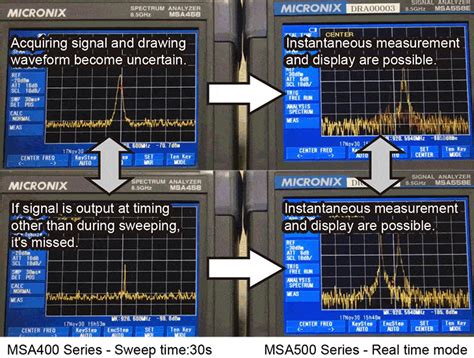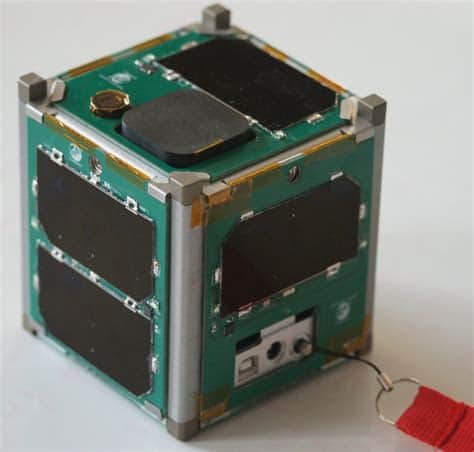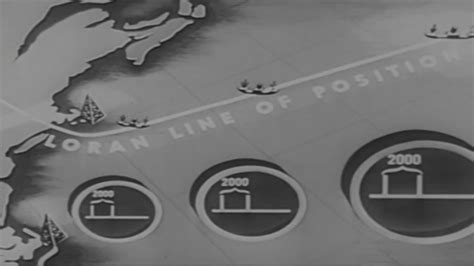Introduction to GNSS-LoRa Technology
GNSS (Global Navigation Satellite System) and LoRa (Long Range) are two cutting-edge technologies that have revolutionized the world of sports tracking. By combining the accuracy of GNSS with the long-range capabilities of LoRa, athletes, coaches, and enthusiasts can now monitor performance, track progress, and analyze data like never before. In this article, we’ll explore 10 awesome things you should know about GNSS sports tracking with LoRa.
1. Accurate and Reliable Positioning
How GNSS Enables Precise Location Tracking
GNSS technology, which includes systems like GPS, GLONASS, and Galileo, provides highly accurate and reliable positioning data. By receiving signals from multiple satellites orbiting the Earth, GNSS receivers can determine their location with precision, often within a few meters. This level of accuracy is crucial for sports tracking, as it allows athletes and coaches to monitor performance, analyze routes, and make informed decisions based on real-time data.
The Role of LoRa in Enhancing GNSS Tracking
While GNSS provides accurate positioning, LoRa technology takes sports tracking to the next level. LoRa is a long-range, low-power wireless communication protocol that enables the transmission of data over vast distances with minimal energy consumption. By integrating LoRa with GNSS, sports tracking devices can transmit location data and other metrics over extended ranges, even in challenging environments like dense forests or urban areas.

2. Long-Range Connectivity
Understanding LoRa’s Long-Range Capabilities
One of the key advantages of LoRa technology is its ability to transmit data over long distances. Depending on the environment and the specific LoRa configuration, devices can communicate over ranges of several kilometers, making it ideal for sports tracking in expansive outdoor settings. This long-range connectivity ensures that athletes can be monitored and tracked even when they venture far from base stations or coaching staff.
Comparing LoRa to Other Wireless Technologies
When it comes to long-range wireless communication, LoRa stands out from other technologies like Bluetooth or Wi-Fi. While Bluetooth and Wi-Fi are well-suited for short-range applications, they struggle to maintain reliable connections over extended distances. LoRa, on the other hand, is specifically designed for long-range, low-power communication, making it the preferred choice for sports tracking in vast areas.
| Technology | Range (Outdoor) | Power Consumption | Data Rate |
|---|---|---|---|
| LoRa | Up to 10km | Low | Low |
| Bluetooth | Up to 100m | Medium | Medium |
| Wi-Fi | Up to 300m | High | High |

3. Low Power Consumption
How LoRa Enables Energy-Efficient Tracking Devices
Another significant advantage of LoRa technology is its low power consumption. LoRa devices are designed to operate for extended periods on small batteries, making them ideal for sports tracking applications where long battery life is essential. Athletes can wear LoRa-enabled tracking devices for hours or even days without needing to recharge, ensuring uninterrupted data collection throughout their training sessions or competitions.
Comparing Battery Life of LoRa Devices to Other Technologies
When compared to other wireless technologies, LoRa devices offer significantly longer battery life. While Bluetooth and Wi-Fi devices may require frequent recharging, LoRa devices can operate for weeks or even months on a single battery charge. This extended battery life is crucial for sports tracking, as it allows athletes to focus on their performance without worrying about device maintenance.
| Technology | Typical Battery Life |
|---|---|
| LoRa | Weeks to months |
| Bluetooth | Days to weeks |
| Wi-Fi | Hours to days |

4. Real-Time Data Transmission
How GNSS-LoRa Enables Live Tracking and Monitoring
GNSS-LoRa technology enables real-time data transmission, allowing coaches, trainers, and spectators to monitor athletes’ performance live. As athletes move through their training sessions or competitions, their GNSS-LoRa devices transmit location data and other metrics instantly, providing a live feed of their progress. This real-time data transmission is invaluable for making quick adjustments, ensuring athlete safety, and enhancing the overall sports experience.
Benefits of Real-Time Data for Coaches and Athletes
Real-time data transmission offers numerous benefits for both coaches and athletes. Coaches can monitor multiple athletes simultaneously, tracking their location, speed, and other performance metrics in real-time. This live data allows coaches to provide immediate feedback, make strategic decisions, and ensure that athletes are training within safe limits. Athletes, in turn, can receive live guidance and motivation from their coaches, helping them to push their limits and achieve their goals.
5. Diverse Range of Sports Applications
Exploring Different Sports That Benefit from GNSS-LoRa Tracking
GNSS-LoRa technology is versatile and can be applied to a wide range of sports, from endurance events like running and cycling to team sports like soccer and rugby. In endurance sports, GNSS-LoRa devices can track athletes’ routes, pace, and elevation changes, providing valuable data for performance analysis and training optimization. In team sports, GNSS-LoRa can monitor player movements, track ball possession, and provide insights into team tactics and strategies.
Case Studies of Successful GNSS-LoRa Sports Tracking Implementations
Several successful case studies demonstrate the effectiveness of GNSS-LoRa tracking in various sports:
-
Marathon Tracking: In major marathon events, GNSS-LoRa devices have been used to track runners’ progress, provide live updates to spectators, and ensure the safety of participants.
-
Soccer Player Monitoring: Professional soccer teams have employed GNSS-LoRa technology to monitor player movements, analyze game performance, and optimize training sessions.
-
Cycling Race Tracking: GNSS-LoRa devices have been used in cycling races to track competitors’ locations, provide live race updates, and enhance the spectator experience.
6. Integration with Data Analytics Platforms
How GNSS-LoRa Data Can Be Analyzed for Performance Insights
GNSS-LoRa technology generates a wealth of data that can be analyzed to gain valuable insights into athlete performance. By integrating GNSS-LoRa data with advanced data analytics platforms, coaches and sports scientists can uncover patterns, trends, and areas for improvement. These insights can inform training plans, optimize recovery strategies, and ultimately help athletes reach their full potential.
Examples of Data Analytics Platforms Compatible with GNSS-LoRa
Several data analytics platforms are compatible with GNSS-LoRa data, offering powerful tools for visualizing, analyzing, and interpreting sports performance data:
-
Strava: A popular platform for tracking and analyzing endurance sports data, Strava integrates with GNSS-LoRa devices to provide detailed performance metrics and social features.
-
Catapult Sports: Catapult Sports offers a comprehensive suite of data analytics tools specifically designed for team sports, compatible with GNSS-LoRa tracking data.
-
TrainingPeaks: TrainingPeaks is a platform for endurance sports that allows athletes and coaches to analyze GNSS-LoRa data, plan training sessions, and monitor progress over time.
7. Enhanced Spectator Engagement
How GNSS-LoRa Tracking Can Improve the Fan Experience
GNSS-LoRa tracking technology has the potential to revolutionize the spectator experience in sports. By providing live tracking data, GNSS-LoRa devices can enable fans to follow their favorite athletes in real-time, access detailed performance statistics, and engage with the sport on a deeper level. This enhanced engagement can lead to increased fan satisfaction, loyalty, and overall interest in the sport.
Examples of Fan Engagement Features Enabled by GNSS-LoRa
GNSS-LoRa tracking enables a range of fan engagement features that can transform the spectator experience:
-
Live Athlete Tracking: Fans can follow their favorite athletes in real-time on interactive maps, watching their progress and comparing performances.
-
Virtual Races: Spectators can participate in virtual races, competing against athletes or other fans using GNSS-LoRa data.
-
Personalized Statistics: Fans can access personalized performance statistics for their favorite athletes, gaining insights into their strengths, weaknesses, and progression over time.
8. Seamless Integration with Wearable Devices
How GNSS-LoRa Can Be Integrated into Wearable Sports Devices
GNSS-LoRa technology can be seamlessly integrated into a variety of wearable sports devices, such as smartwatches, fitness trackers, and specialized sports equipment. By incorporating GNSS-LoRa capabilities into these devices, manufacturers can offer athletes and coaches a comprehensive solution for tracking, monitoring, and analyzing sports performance data.
Examples of Wearable Devices with GNSS-LoRa Integration
Several wearable devices on the market already feature GNSS-LoRa integration, offering users the benefits of accurate positioning and long-range connectivity:
-
Garmin Forerunner Series: Garmin’s Forerunner series of smartwatches combines GNSS technology with LoRa connectivity to provide athletes with precise location tracking and real-time data transmission.
-
Fitbit Ionic: The Fitbit Ionic smartwatch integrates GNSS and LoRa to offer users accurate location tracking and long-range connectivity for sports and fitness applications.
-
Specialized ANGi Helmet: The Specialized ANGi cycling helmet incorporates GNSS-LoRa technology to detect crashes, alert emergency contacts, and provide real-time tracking data.
9. Ensuring Data Privacy and Security
Importance of Data Privacy in Sports Tracking
Data privacy and security are crucial considerations in sports tracking, as GNSS-LoRa devices collect and transmit sensitive information about athletes’ locations, performance, and health. Ensuring the confidentiality and integrity of this data is essential to maintain athlete trust and comply with relevant regulations, such as the General Data Protection Regulation (GDPR) in the European Union.
Best Practices for Securing GNSS-LoRa Sports Tracking Data
To ensure the privacy and security of GNSS-LoRa sports tracking data, organizations should implement the following best practices:
-
Encryption: Use strong encryption methods to protect data during transmission and storage, preventing unauthorized access.
-
Access Control: Implement strict access control measures, ensuring that only authorized personnel can view and manipulate athlete data.
-
Data Minimization: Collect and retain only the data necessary for the intended purpose, minimizing the risk of data breaches or misuse.
-
Consent and Transparency: Obtain explicit consent from athletes for data collection and processing, and provide clear information about how their data will be used and protected.
10. Future Developments and Potential Applications
Emerging Trends in GNSS-LoRa Sports Tracking Technology
GNSS-LoRa sports tracking technology continues to evolve, with new developments and trends emerging to enhance its capabilities and applications. Some of the most promising trends include:
-
Machine Learning Integration: Combining GNSS-LoRa data with machine learning algorithms to provide predictive insights and personalized recommendations for athlete performance optimization.
-
Augmented Reality (AR) Applications: Using GNSS-LoRa data to create immersive AR experiences for athletes and fans, such as virtual training environments or interactive race visualizations.
-
IoT Ecosystem Integration: Integrating GNSS-LoRa sports tracking devices with broader Internet of Things (IoT) ecosystems, enabling seamless data exchange and automation across multiple devices and platforms.
Potential Future Applications of GNSS-LoRa in Sports and Beyond
The potential applications of GNSS-LoRa technology extend beyond sports tracking, with numerous opportunities for innovation in related fields:
-
Athlete Health Monitoring: Using GNSS-LoRa devices to monitor athletes’ vital signs, stress levels, and recovery status, enabling proactive injury prevention and personalized training plans.
-
Sports Venue Management: Employing GNSS-LoRa technology to optimize stadium operations, such as crowd management, resource allocation, and emergency response planning.
-
Smart City Integration: Integrating GNSS-LoRa sports tracking data with smart city infrastructure to enhance urban planning, transportation management, and public health initiatives.
Frequently Asked Questions (FAQ)
-
What is the range of GNSS-LoRa sports tracking devices?
A: GNSS-LoRa devices can typically transmit data over ranges of several kilometers, depending on the specific device configuration and environmental conditions. -
How long can GNSS-LoRa devices operate on a single battery charge?
A: GNSS-LoRa devices are designed for low power consumption and can operate for weeks or even months on a single battery charge, depending on the usage intensity and device specifications. -
Can GNSS-LoRa data be integrated with third-party data analytics platforms?
A: Yes, GNSS-LoRa data can be easily integrated with a wide range of third-party data analytics platforms, such as Strava, Catapult Sports, and TrainingPeaks, to provide comprehensive performance insights and visualization. -
Are GNSS-LoRa sports tracking devices suitable for indoor use?
A: While GNSS technology relies on satellite signals and may have limited functionality indoors, LoRa connectivity can still enable data transmission in indoor environments, depending on the specific device and setup. -
How is athlete data privacy ensured in GNSS-LoRa sports tracking?
A: To ensure athlete data privacy, organizations should implement best practices such as data encryption, strict access control measures, data minimization, and obtaining explicit consent from athletes for data collection and processing.
Conclusion
GNSS-LoRa technology has revolutionized the world of sports tracking, offering athletes, coaches, and fans unprecedented insights into performance, progress, and competition. By combining the accuracy of GNSS with the long-range, low-power capabilities of LoRa, sports tracking devices can provide real-time data transmission, seamless integration with wearables, and advanced analytics capabilities. As the technology continues to evolve, the potential applications of GNSS-LoRa extend beyond sports, promising exciting developments in fields such as athlete health monitoring, smart city integration, and more. With a focus on data privacy and security, GNSS-LoRa sports tracking has the power to transform the way we engage with sports and push the boundaries of human performance.

No responses yet